
The brilliance of Facebook’s ad platform lies in its ability to target prospects with laser-like precision. Not surprisingly, marketers were quick to recognize the tremendous opportunity the “interest targeting” option offered.
However, while many businesses are actively attempting to leverage the seemingly limitless possibilities of this function, many are failing to optimize their efforts, ultimately limiting success while wasting time, energy and money.
So how can you be sure you are properly leveraging this feature?
Below are a few key tricks and tips to follow when setting up your targeted ads. But first, let’s identify a few of the common mistakes marketers make so you know what to steer clear of.
Getting Untargeted & Low-Quality Fans
While most marketers leveraging Facebook ads already do so using interest targeting, a surprising number of them are incorrect in their approach. Many of these marketers are simply targeting broad interest categories they think make sense for their target demographic.
While selecting broad interests categories seems like an easy and effective strategy, this practice ultimately has two flaws.
Although this approach may help a brand grow its audience, it quickly becomes apparent many of these new fans are not truly a part of the desired target market and therefore not useful for converting into customers. To further illustrate, let’s take a look at the example below.
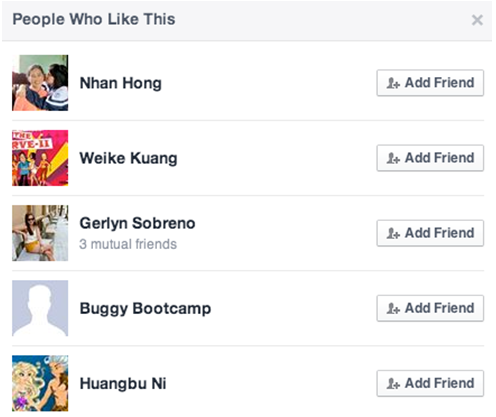
Here, broad interest targeting resulted in a New York City based retail store receiving page likes from individuals not within their desired demographic.
Part of the problem is which individuals Facebook identifies as having a particular interest. If the interest in question is a competitor, you are ultimately at the mercy of the quality of their fan base. If their following wasn’t grown organically, their fan base likely has its share of bots and fake profiles. In targeting their following, you are certain to acquire them as well. Bots can also be connected to interests in other than brands, so it is difficult to avoid such when targeting using broad interest categories.
While broad interest targeting can also result in page likes from actual people, the quality of these likes can still be poor. Selecting a broad interest category of Shopping and Fashion may sound like a natural fit for the prospects of a high-end fashion brand, but under the umbrella of this broad category are also Discount Stores and Coupons.
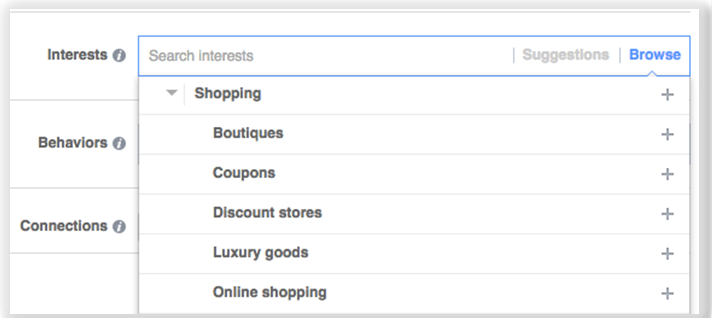
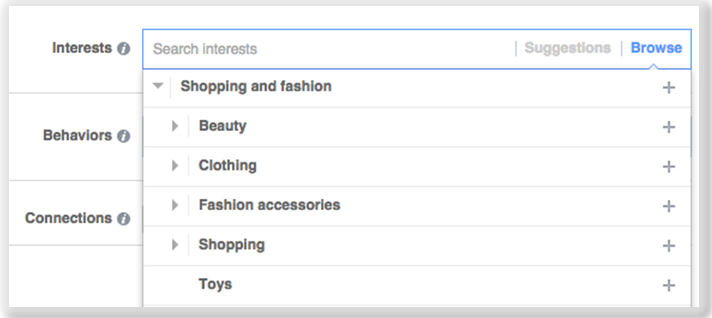
So while this brand may think they are reaching prospects that could be potential customers, Facebook’s grouping of these broad interests is allowing them to market to individuals who are not actually qualified prospects. Furthermore, Facebook categorizes Toys under the Shopping and Fashion interest, clearly not an ideal fit for a fashion retailer.
Even with an interest in the broader category, an individual may very well have little to no interest in your brand. For this reason, targeting interests in this manner can be less cost effective, as well.
Little Known Techniques to Find the Right Interests
While marketers may experience some level of success with broad interest category targeting, there are a few tools Facebook offers that can help you improve efficiency dramatically. Facebook Graph Search has the ability to provide marketers with valuable insights into their target audiences.
This can allow a business to correctly identify a variety of likes and interests of their target base. With just a few keystrokes, one can identify people who like a particular page, their other page likes, and most importantly, their interests.
Below are examples of how Graph Search can be used to help better identify the interests of current and potential fans.
Simply type, “Interests liked by people who like PAGE NAME” into the search bar. Facebook will now provide you with a list of interests most common among fans of the page included in the search. This information will not only allow you to create a more accurate profile of individuals who may be likely potential customers, but it will also allow you to better target these individuals as well.
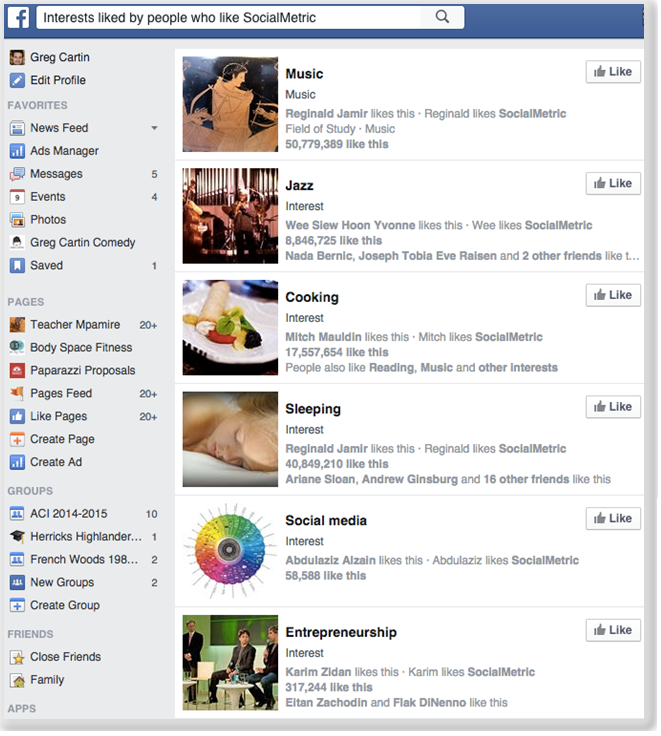
Next, try searching “Pages liked by people who like PAGE NAME.” Graph Search will share other Facebook pages commonly liked by fans of the page included in the search. Similar to the example above, this information is valuable in helping develop a clearer, more detailed profile of individuals you can target in your Facebook ad campaign.
The more insights you compile, the more effective you will be when targeting.

Now, let’s dig even deeper. Run a more detailed search to uncover interesting interests of your audience. Type, “Interests like by people who like PAGE NAME 1 and PAGE NAME 2.” Try different combinations to learn as much as you can.
The more you know, the more efficient you will be in connecting with these prospects. The information from these more detailed searches will be even more valuable to you when you taking advantage of advanced interest targeting, which we will discuss later in this article.
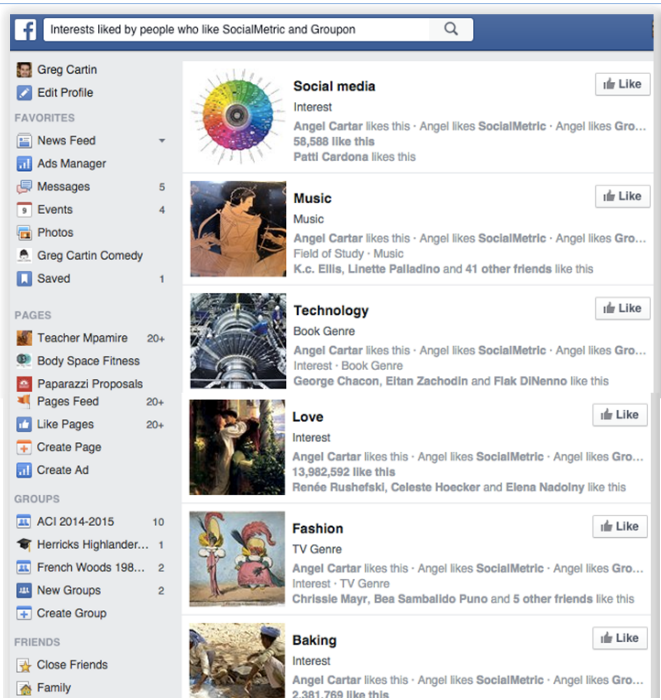
These searches can also be used to identify interests and page likes of your fans based on age and gender. Try searching “Pages liked by women who like PAGE NAME” or “Pages liked by people over the age of 30 who like PAGE NAME.” The more exhaustive your Graph Searches, the more valuable data you will have to successfully leverage interest targeting.

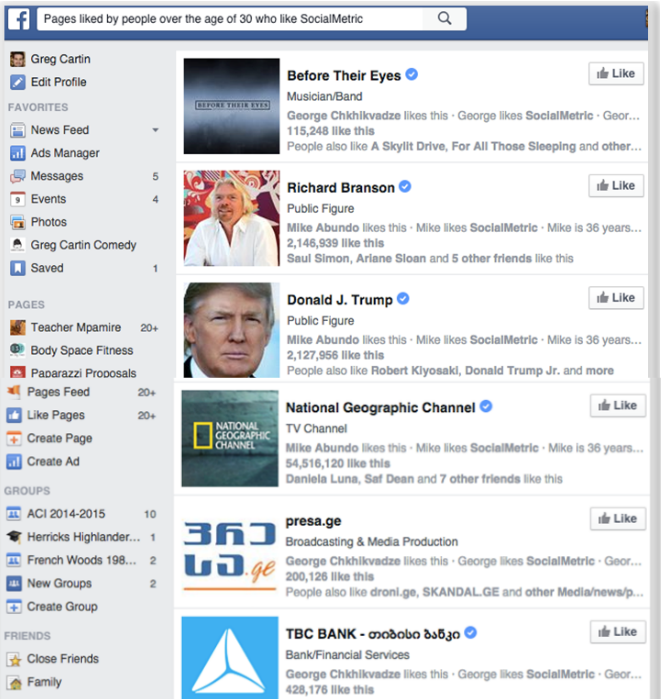
Knowing which interests and activities your target audience enjoys allows you to better target these individuals and ultimately provide the biggest bang for your budget.
Another important and helpful tool for creating ads using interest targeting is audience insights. Using this feature allows you to better determine key information about the individuals who tend to like and engage with your brand. Geography, demographics, purchase activity and behaviors, and Facebook usage can all be identified and leveraged in your targeting efforts.
Similar to Graph Search results, the more audience insights you identify, the better prepared you will be to efficiently market to these potential customers.
To access this feature, go to Ads Manager, and then click on Audience Insights. Once there, you will be asked to choose an audience to compare against. Select “People connected to your page.” Facebook will now share how many monthly active fans you have, and you can click-through multiple categories that will provide you valuable insight and information. Demographics, Location, Household, and Purchase are all categories worth reviewing and using to better illustrate a clear picture of your current fans, as well as identify potential ones.
Below, you’ll find sample images of the treasure trove of information audience insights can provide you with about your core audience.
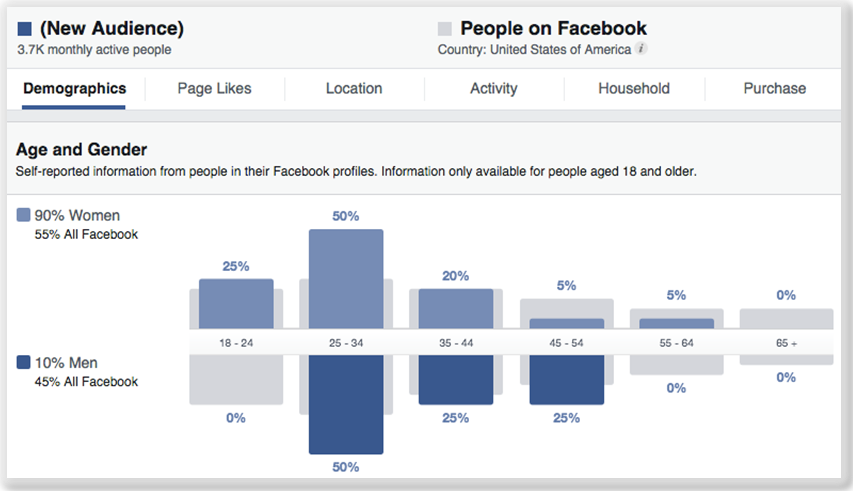
Demographics of fan base
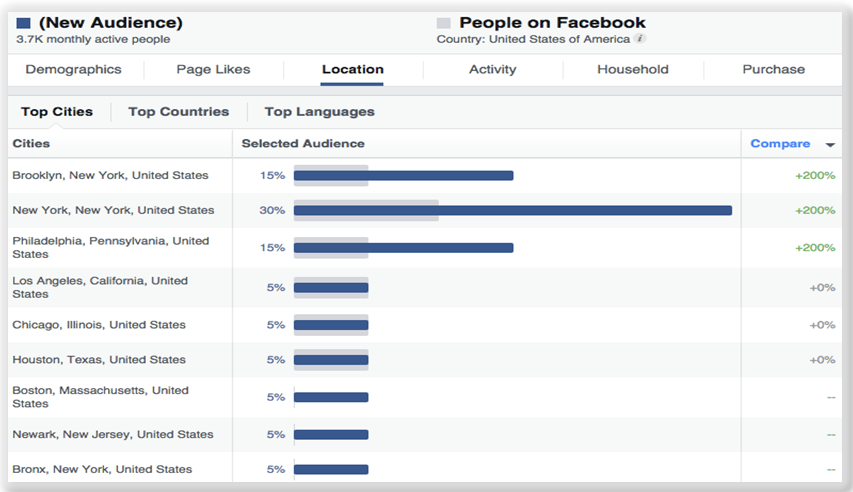
Location of fan base
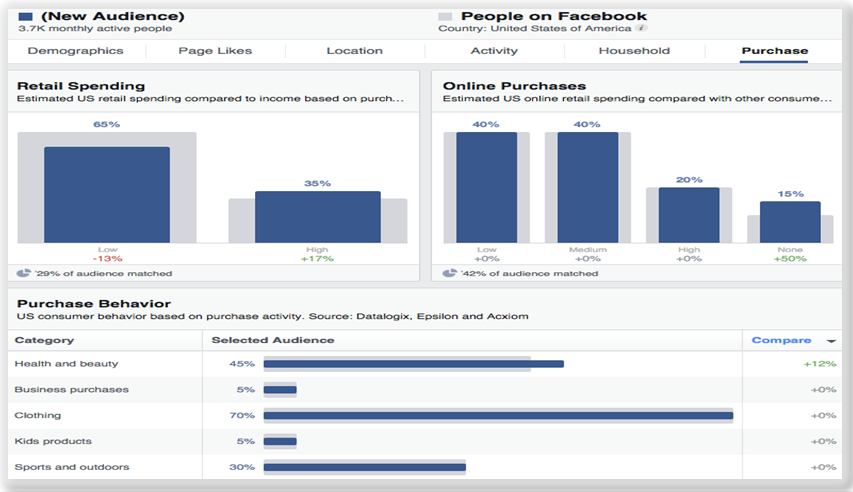
Purchase behaviors of current fan base
The demographics and behaviors identified through these Audience Insights paints a picture of your greatest targeting opportunity, as people who fit this profile are most likely to actively visit your page or use your product or service.
But Wait, There’s More!
Another great function to leverage in your interest targeting efforts is the advanced interest targeting capability. While this feature was only made available to select Power Editor beta users, it can also be accessed within the Facebook ads API.
This targeting feature includes “And” logic, which allows you to target individuals who have expressed interest in multiple categories you have identified as common amongst your prospects. Facebook’s standard targeting feature only allows a business to target interests on an “or” basis, meaning any interests they select will essentially be separately targeted (i.e. fashion OR handbags OR Donna Karan OR accessories).
This means the individuals reached within this targeting will only have expressed interest in just one of these categories. When taking advantage of the “and” logic capability, your targeting becomes more precise.
Now, this same business can target individuals who have expressed interest in fashion AND handbags AND Donna Karan, and so on. If the audience you are targeting with these interests is substantial enough, this inclusion method of targeting is potentially far more effective and efficient.
So the next time you set up an ad campaign using interest targeting, remember to use these three things to help improve both your efficiency and results:
- Use Graph Search for a deeper understanding of the likes and interests of your audience.
- Look at your audience insights to identify other key demographic characteristics of your audience.
- Utilize the “and” logic function within Power Editor or Facebook’s ads API.






